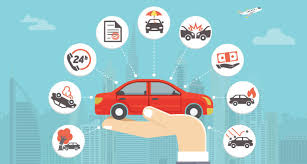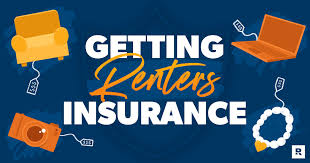Car insurance is a crucial aspect of vehicle ownership, offering financial protection against accidents, theft, and other unforeseen circumstances. Whether you’re a new driver or an experienced motorist, understanding the basics of car insurance can help you make informed decisions and find the best coverage for your needs. This detailed guide will walk you through the key components of car insurance, different types of policies, how to choose the right one, and tips for saving money on premiums.

What is Car Insurance?
Car insurance is a contract between you and an insurance company that protects you financially if you’re involved in an accident or your car is damaged, stolen, or destroyed. In exchange for paying a premium, your insurer agrees to cover specific costs related to accidents, damage, or theft based on the type of coverage you choose. Car insurance is required by law in most countries, and failing to maintain adequate coverage can result in legal and financial consequences.
Why Do You Need Car Insurance?
- Legal Requirement: In many countries, having car insurance is mandatory. It protects you and others on the road from the financial burden of accidents, injuries, and damages.
- Financial Protection: If you’re involved in a crash, car insurance helps cover the costs of repairs, medical bills, or legal fees. Without insurance, these expenses could be overwhelming and result in significant debt.
- Peace of Mind: Car insurance offers peace of mind knowing that you’re protected from various risks associated with driving. Whether it’s an accident, weather-related damage, or theft, insurance can offer a safety net.
- Protection Against Lawsuits: If you’re at fault in an accident and another driver files a lawsuit against you, car insurance can help cover the legal costs and any compensation you owe.
Types of Car Insurance Coverage
There are several types of car insurance coverage, and each one offers different levels of protection. Understanding these options is key to choosing the right policy for your needs.
1. Liability Insurance
Liability insurance is the most basic form of car insurance, and it is required in most places. It covers the cost of injuries or property damage caused to others in an accident where you are at fault. Liability insurance is divided into two parts:
- Bodily Injury Liability: Covers medical expenses, lost wages, and other costs related to injuries sustained by others in an accident you cause.
- Property Damage Liability: Pays for the repair or replacement of another person’s property (such as their car or a fence) if you are responsible for the damage.
2. Collision Insurance
Collision insurance helps pay for repairs to your own vehicle if you’re involved in an accident, regardless of who’s at fault. This coverage can be particularly beneficial if your car is worth a significant amount of money, as it can help you avoid high out-of-pocket expenses for repairs or replacement.
3. Comprehensive Insurance
Comprehensive insurance covers damage to your car caused by events that are not related to a collision, such as vandalism, theft, weather-related events (like hail or floods), or falling objects. This type of coverage helps protect your car against a wide range of risks and is often bundled with collision insurance for a more comprehensive policy.
4. Personal Injury Protection (PIP)
Personal Injury Protection (PIP), also known as no-fault insurance, covers medical expenses and lost wages for you and your passengers, regardless of who was at fault in the accident. PIP can also cover additional costs like childcare or household services if you are unable to work due to injury.
5. Uninsured/Underinsured Motorist Insurance
This coverage protects you if you’re involved in an accident with a driver who either doesn’t have insurance or doesn’t have enough coverage to pay for your damages. It can also cover hit-and-run accidents where the at-fault driver is unknown.
6. Gap Insurance
If you owe more on your car loan or lease than your car is worth, gap insurance can help cover the difference in case your car is totaled in an accident. It’s often recommended for drivers with new or leased vehicles.
7. Roadside Assistance and Rental Reimbursement
Some policies offer roadside assistance, which provides help if your car breaks down, as well as rental reimbursement, which covers the cost of a rental car if your vehicle is being repaired after an accident.
How Car Insurance Premiums Are Calculated
The cost of car insurance, known as the premium, is influenced by a number of factors. Understanding how these factors are calculated can help you find ways to reduce your premiums.
Key Factors Influencing Car Insurance Rates
- Driving History: If you have a history of accidents or traffic violations, your premiums may be higher, as you are considered a higher risk.
- Vehicle Type: The make, model, and year of your car can affect your premium. Expensive, high-performance, or luxury vehicles typically have higher insurance rates due to higher repair costs and increased likelihood of theft.
- Location: Where you live plays a significant role in your car insurance premium. If you live in a city with higher traffic, accident rates, or theft rates, your premiums may be higher.
- Age and Gender: Younger drivers, especially teenagers, tend to pay higher premiums due to inexperience and higher accident rates. Statistically, male drivers under the age of 25 are considered higher risk and often face higher premiums.
- Credit Score: In many places, your credit score can affect your insurance premium. A lower credit score may lead to higher premiums, as insurers consider individuals with lower credit scores to be riskier.
- Coverage and Deductibles: The level of coverage you choose and your deductible amount (the amount you pay out of pocket before your insurance kicks in) also influence your premium. Higher coverage limits and lower deductibles generally result in higher premiums.
- Annual Mileage: If you drive more frequently, you are more likely to be involved in an accident, leading to higher premiums. Conversely, if you drive less, your premium may be lower.
Tips for Choosing the Right Car Insurance
When shopping for car insurance, it’s essential to compare policies and choose the one that best suits your needs. Here are some tips to guide you:
- Assess Your Coverage Needs: Evaluate how much coverage you need based on your driving habits, vehicle value, and risk tolerance. For example, if you drive an older car, you may want to forgo comprehensive and collision coverage, but if you have a newer car, this coverage may be worth the extra cost.
- Get Multiple Quotes: Car insurance rates can vary significantly between providers, so it’s crucial to get quotes from multiple insurance companies. This will allow you to compare prices and coverage options to find the best deal.
- Consider Customer Service and Reputation: The price of a policy is important, but so is the quality of customer service. Research insurance providers to see how they handle claims, customer complaints, and overall satisfaction.
- Look for Discounts: Many insurers offer discounts for things like bundling policies (e.g., car and home insurance), maintaining a safe driving record, installing anti-theft devices in your vehicle, or taking a defensive driving course. Be sure to ask about potential discounts when obtaining quotes.
- Review Your Policy Regularly: Your insurance needs may change over time. Be sure to review your policy at least once a year or whenever significant changes occur, such as buying a new car, moving to a new location, or improving your credit score.
How to Save Money on Car Insurance
Car insurance premiums can add up, but there are several ways to reduce costs without sacrificing coverage:
- Increase Your Deductible: A higher deductible means lower premiums, but it also means you’ll pay more out-of-pocket if you file a claim. Consider this option if you’re confident you won’t need to make frequent claims.
- Maintain a Clean Driving Record: Avoid accidents and traffic violations, as these can lead to higher premiums. Defensive driving courses can sometimes help lower rates, as they demonstrate your commitment to safe driving.
- Choose a Car with Lower Insurance Costs: When buying a new car, consider the cost of insurance. Vehicles that are cheaper to repair, less likely to be stolen, or have better safety ratings tend to have lower insurance premiums.
- Take Advantage of Discounts: Insurance companies offer various discounts for safe drivers, students, or those who complete certain programs. Be proactive in asking about these discounts.
- Bundle Policies: If you have other types of insurance (like homeowners or renters insurance), bundling them with your car insurance can often result in discounts.
Conclusion
Car insurance is an essential investment that provides financial protection in the event of accidents, theft, or other unforeseen circumstances. By understanding the different types of coverage, factors that affect your premium, and how to shop for the right policy, you can ensure that you’re adequately protected while also finding ways to save money. Make sure to assess your individual needs, compare quotes, and consider all discounts to get the best car insurance policy that fits your budget and driving habits.

FAQs About Car Insurance
1. What is car insurance?
Car insurance is a contract between you and an insurance company that provides financial protection in the event of accidents, damage, theft, or injury related to your vehicle. In exchange for paying a premium, the insurer agrees to cover certain costs based on the coverage you choose.
2. Why do I need car insurance?
Car insurance is necessary for legal protection, financial security, and peace of mind. It helps cover medical costs, repairs, or damages from accidents, as well as provides coverage in case of theft or vandalism. Most places require car insurance by law to ensure drivers are financially protected in case of an accident.
3. What types of car insurance coverage are available?
There are several types of car insurance coverage, including:
- Liability Insurance: Covers bodily injury and property damage to others if you’re at fault in an accident.
- Collision Insurance: Pays for repairs to your own vehicle after an accident.
- Comprehensive Insurance: Covers damage to your car caused by non-collision events like theft or weather damage.
- Personal Injury Protection (PIP): Covers medical expenses and lost wages for you and your passengers, regardless of who is at fault.
- Uninsured/Underinsured Motorist Insurance: Protects you if you’re in an accident with someone who doesn’t have adequate insurance.
- Gap Insurance: Covers the difference between what you owe on your car and its current value if it’s totaled.
4. How do car insurance premiums work?
Car insurance premiums are the amount you pay to your insurance provider for coverage. The premium is determined by various factors, including your driving history, age, vehicle type, location, coverage level, and even your credit score. Higher-risk drivers, like those with a history of accidents or violations, typically pay higher premiums.
5. What factors affect my car insurance rates?
Several factors influence your car insurance rates, such as:
- Driving history: Accidents, traffic violations, and claims history.
- Vehicle type: The make, model, and age of your car.
- Location: Where you live, as areas with higher accident rates or theft risks may increase premiums.
- Age and gender: Younger drivers and male drivers under 25 often pay higher premiums.
- Credit score: Insurers may charge higher rates for drivers with lower credit scores.
- Coverage and deductibles: The more coverage you have and the lower your deductible, the higher your premium may be.
6. What is the minimum car insurance required by law?
The minimum car insurance required by law varies by country and state. Typically, you need liability insurance that covers bodily injury and property damage. Be sure to check local regulations to ensure you meet the legal requirements in your area.
7. How can I save money on car insurance?
There are several ways to lower your car insurance premiums:
- Increase your deductible: A higher deductible means lower premiums, though you’ll pay more out-of-pocket in the event of a claim.
- Maintain a clean driving record: Avoid accidents and violations to keep your rates low.
- Look for discounts: Ask about discounts for safe driving, bundling policies, installing anti-theft devices, or taking a defensive driving course.
- Choose a car with lower insurance costs: Opt for a car with a lower repair cost, fewer safety risks, or one that is less likely to be stolen.
8. What is a deductible?
A deductible is the amount of money you agree to pay out-of-pocket before your insurance policy kicks in to cover the remaining costs. For example, if you have a $500 deductible and your car repair costs $2,000, you will pay $500, and your insurer will pay the remaining $1,500.
9. Can I drive without car insurance?
In most places, it is illegal to drive without car insurance. Failing to maintain adequate coverage can lead to legal and financial consequences, including fines, license suspension, or even legal liability for damages in an accident.
10. What should I do if I need to file a claim?
If you need to file a claim, follow these steps:
- Contact your insurer: Report the incident as soon as possible.
- Gather evidence: Take photos, obtain witness statements, and collect details from any other parties involved in the accident.
- Follow your insurer’s process: Your insurance company will guide you through the claims process, including arranging vehicle inspections and determining payouts.
11. How often should I review my car insurance policy?
It’s a good idea to review your car insurance policy annually or whenever significant changes occur, such as buying a new car, moving to a new location, or improving your credit score. Regular reviews can help ensure you’re still getting the best coverage at the best price.
12. What is the difference between full coverage and basic car insurance?
“Full coverage” typically refers to a combination of liability, collision, and comprehensive insurance, which provides extensive protection. “Basic car insurance” generally refers to minimum required liability coverage, which may not cover your own vehicle’s damage or non-collision events.
13. What should I do if I have an accident but the other driver is uninsured?
If you’re in an accident with an uninsured driver, your uninsured motorist coverage (if included in your policy) may help cover your costs. This coverage can pay for repairs, medical expenses, and other related costs. If you don’t have uninsured motorist coverage, you may need to pay for repairs and medical bills out-of-pocket or seek legal action against the at-fault driver.
14. Can I add someone to my car insurance policy?
Yes, most insurers allow you to add other drivers to your policy, such as a spouse, family member, or roommate. Keep in mind that adding a driver may increase your premium if they have a poor driving record.
15. How does my credit score affect my car insurance?
In many places, your credit score can impact your car insurance rates. A lower credit score may lead to higher premiums, as insurers often consider individuals with lower scores to be higher risk. Improving your credit score over time can help lower your premiums.












Leave a Reply